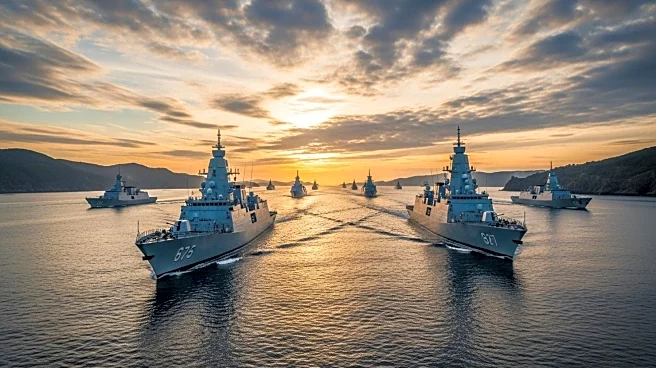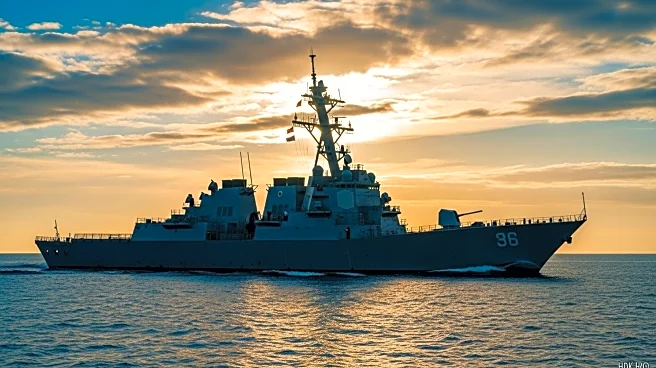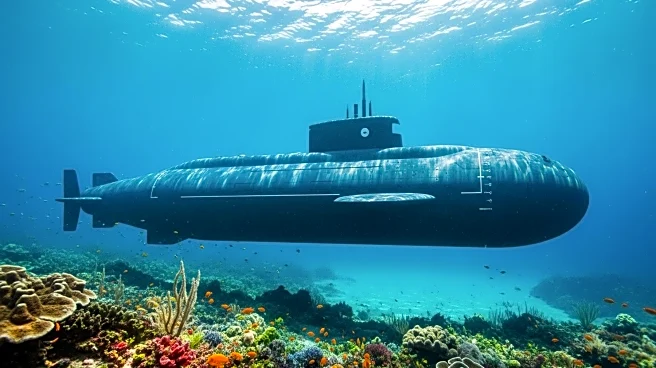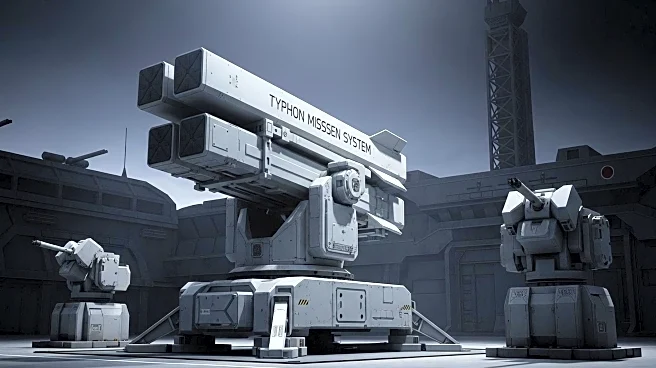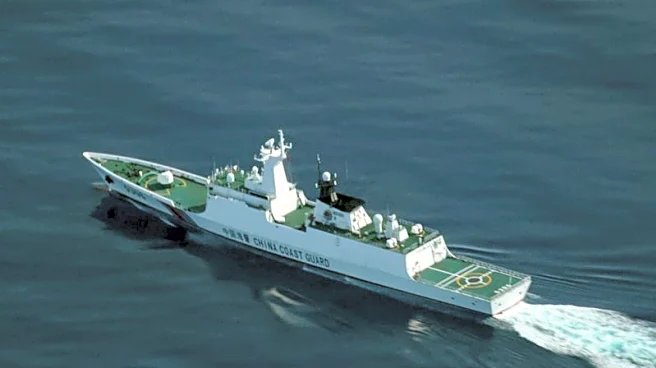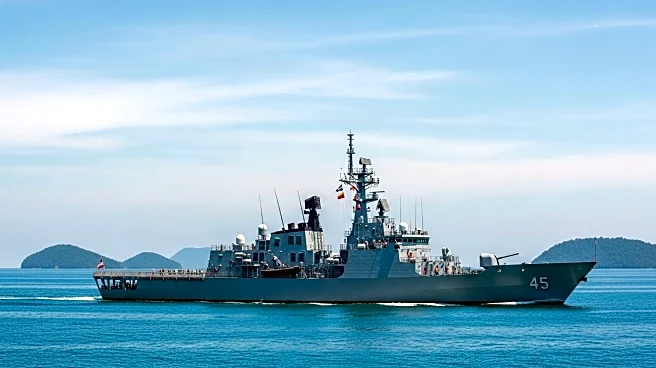What's Happening?
The Taiwan Strait has seen increased activity with the transit of allied warships, including the Australian Hobart Class destroyer HMAS Brisbane and Canadian Halifax Class frigate HMCS Ville de Québec. These movements were monitored by the People's Liberation Army Eastern Theater Command, which expressed objections. Concurrently, the Royal Navy carrier HMS Prince of Wales conducted exercises with South Korean naval vessels in the Sea of Japan. Russian Pacific Fleet ships also navigated the region, highlighting the strategic importance of these waters amid ongoing geopolitical tensions.
Why It's Important?
The naval activities in the Taiwan Strait underscore the strategic significance of the region, which is a focal point for international military presence and geopolitical interests. The transit of allied warships reflects efforts to assert freedom of navigation and maintain regional security amid tensions with China. These movements may influence diplomatic relations and military strategies, as countries navigate complex security dynamics. The presence of multiple naval forces in the area highlights the potential for increased military cooperation among allies, while also posing challenges in managing regional stability.
What's Next?
As the carrier strike group led by HMS Prince of Wales returns to Portsmouth, it may encounter heightened security challenges, reflecting the evolving geopolitical landscape. Continued naval exercises and transits in the region are likely, as countries seek to reinforce their strategic positions. Diplomatic engagements and military collaborations may intensify, with stakeholders closely monitoring developments. The situation in the Taiwan Strait remains fluid, with potential implications for regional security policies and international relations.

